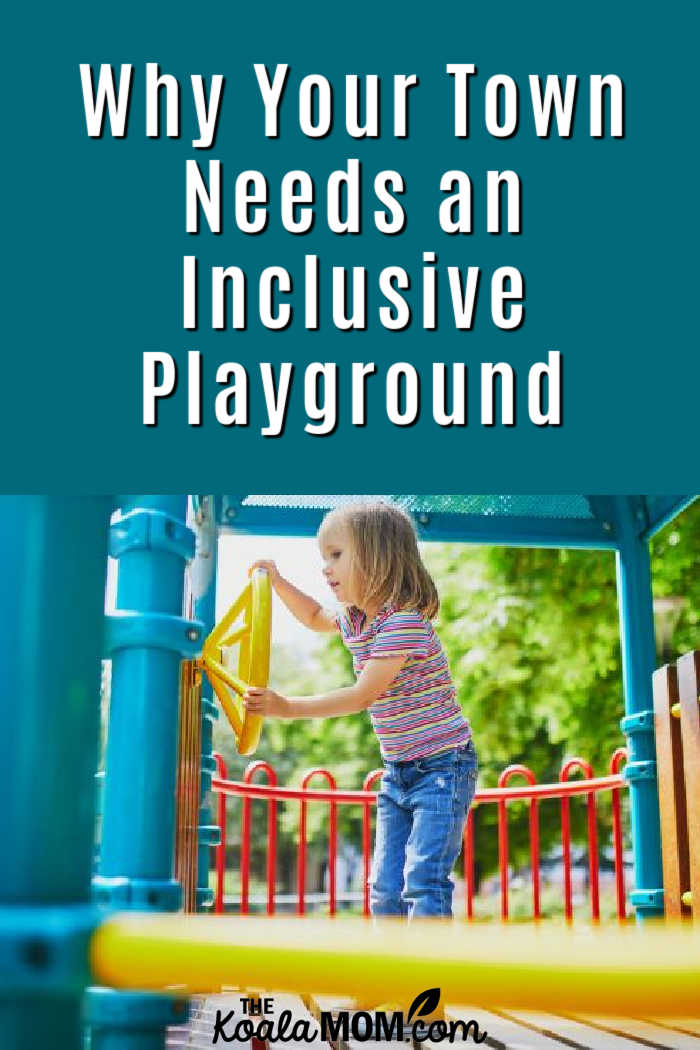Children with disabilities need play and social interaction like non-disabled and neurotypical kids. Before the Americans With Disabilities Act (ADA), kids with disabilities would have to sit by and watch other kids play. Children with visual impairments, cognitive differences, or sensory processing issues were often confronted with overwhelming spaces that were difficult to navigate.
Post-ADA, many communities have invested in inclusive playgrounds. These offer children of all abilities and differences the chance to engage in play that builds physical strength and social connection. Plus, these playgrounds allow all kids to have fun. If there are no such playgrounds in your area, learn the benefits of adding an inclusive playground in your town to help you advocate for new layouts and equipment.

Inclusion Is More than Accessibility
Many people confuse inclusion with accessibility. Inclusion is broader. Yes, playgrounds should provide ramps and surfaces that children and adults in wheelchairs can use to enter the space and access equipment. But not all disabilities are visible to physically able and neurotypical people.
Children with autism, sensory processing disorders, or visual impairments need consideration, too. Playgrounds with contrasting colors may help the visually impaired. Play areas that allow “parallel” or individual play, where kids with sensory issues can have fun on their own, provide needed breaks from overwhelming sensory input. Layouts should accommodate moving between pieces of equipment and play areas, allowing kids to choose what equipment they want to use and if they wish to interact with other kids or play on their own.
Why Your Town Should Have an Inclusive Playground
The CDC estimates that one in six American children have a developmental disability. Over three million children, or 4.3 percent of American kids, have some type of disability. The Institute of Education Sciences reports that 15 percent of American schoolchildren received special education services in the 2021-2022 school year, including kids with learning disabilities.
These children attend school and grow to adulthood alongside non-disabled and neurotypical kids. The Individuals with Disabilities Act (IDEA) requires public schools to provide the “least restrictive” environment for kids with disabilities to receive their education. As a practical matter, this means kids with disabilities will spend the maximum time possible in classrooms with their peers who do not require special education services.
Inclusive playgrounds set all children on a path of acceptance and understanding that will benefit them later in life—at college, at work, and in the community.
Inclusive Playgrounds Are Good for All Kids
Inclusive playgrounds include many of the same elements as sensory gyms, which help kids with disabilities develop their sensory perception and processing skills. In communities where winter weather makes using outdoor playgrounds impossible, community recreation centers can fill the void by providing inclusive indoor playgrounds based on sensory gym principles.
Playgrounds are community gathering places where families can interact with others they may not have met. When children with disabilities attend different schools from their peers, it can limit their social opportunities. Creating inclusive playgrounds for your town allows kids from throughout the community to gather, along with their parents and caregivers, and everyone has the chance to make new friends and broaden their connections within the community.

No Responses Yet